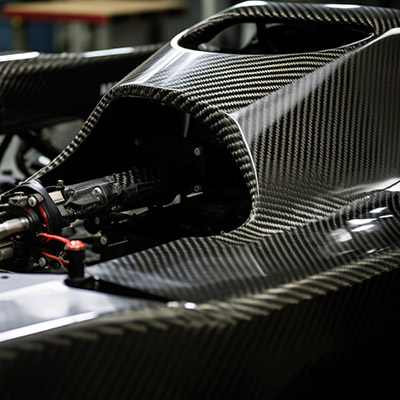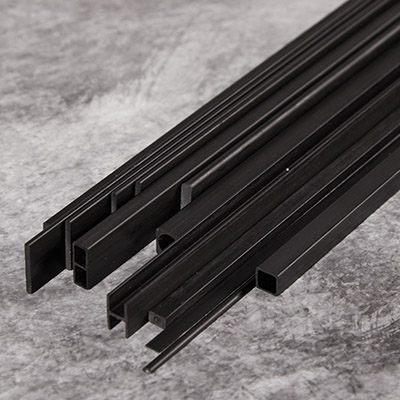
How carbon fiber is revolutionizing sustainable energy industry
👁 Reads: 371
Carbon fiber products are one of the most impactful innovations of the 21st century. These products are designed with a unique combination of high strength and low weight. In 2022, the global carbon fiber market was about US $3.95 billion. It is expected to be US $6.70 billion by 2028. The increasing trend of carbon fiber usage in the market is due to its remarkable properties, such as high strength, lightweight, corrosion-resistant, and chemical inertness.
Carbon fiber products have a wide range of applications. It is light with more strength than other fibers. The modern trend of using carbon fiber products is grabbing attention because it increases the overall process efficiency and due to its high strength-to-weight ratio. The products are used in almost every sector, including the aerospace industry, automotive sector, building structures, and energy storage devices. Fuselages contain carbon fibers. The structural components of satellites are made up of carbon fiber composites.
Similarly, carbon fiber is employed in producing chassis and car panels to reduce the vehicle's weight.

Carbon fiber sheets, rods, and tubes differ in shape and applications. They are all composite materials from carbon fibers embedded in a polymer matrix, mainly epoxy resin. Carbon fiber sheets are thin, flat structures. They are used in applications requiring flat and rigid panels or surfaces. Carbon fiber rods are solid cylindrical structures typically used in applications requiring minimal bending and reinforcement. Carbon fiber tubes are hollow cylindrical pipelike structures. They offer a balance between strength and weight. Carbon fiber tubes are typically used in the aerospace industry and structural elements.
Carbon fiber is revolutionizing the sustainable energy industry in several ways. Some of these are discussed here:
Lightweight and Strong Materials:
Carbon fiber composite is extremely strong and lightweight, making it useful for manufacturing various products. Due to its remarkable properties, it is a key player in the sustainable energy industry. It is considered ideal for applications in renewable energy. More efficient and durable components are being constructed using carbon fiber composite. The overall mass of the component is reduced due to the lightweight property of carbon fiber.
Wind turbine blades:
Carbon fiber-reinforced turbine blades are more durable and much lighter than their traditional counterparts. They operate efficiently by capturing more wind energy. The overall energy production of wind farms increases. As carbon fiber wind turbine blades are lightweight, it causes less stress on turbine components. This prevents the blade from abrupt failure and increases its durability.
Energy Storage:
Using carbon fibers can enhance the performance of energy storage systems such as high-pressure hydrogen tanks and lightweight battery components. Carbon fiber hydrogen tanks are used to store hydrogen gas at high temperatures. It is non-reactive with hydrogen and maintains the purity of stored hydrogen gas. Hydrogen gas purity is crucial for fuel cells, which is achievable using carbon fiber hydrogen tanks.
Solar energy:
Carbon fiber-reinforced materials are used to construct support structures of solar panels. The strength and durability of carbon fiber have contributed to its longevity and consistent energy generation over the years. It increases lifespan and reduces maintenance and replacement costs. Solar panels are installed on the roofs for maximum energy storage. Carbon fiber support structures help to withstand severe environmental conditions such as wind, rain, and snow by providing the necessary grip and stability. Carbon fiber is used in tracking systems of solar installations to follow the sun's path throughout the day for maximum energy storage.
Grid infrastructure:
Carbon fiber-reinforced materials can strengthen and improve transmission towers and utility poles. It plays a significant role in enhancing grid infrastructure. Its lightweight characteristic minimizes sagging, ultimately reducing energy losses due to electrical resistance and making the electrical grid efficient. It is less susceptible to damage. Carbon fiber composite is corrosion-resistant. This property makes it useful in areas with severe environmental conditions.
Light-weight vehicles:
Carbon fibers manufacture electric and hybrid vehicles. It is used to reduce weight and improve fuel efficiency in traditional internal combustion engines and electric vehicles. Carbon fiber composite is used to manufacture body panels and chassis of cars. The car's overall weight is reduced using carbon fibers instead of steel or aluminum. Less energy is required for the motion of lightweight vehicles. This ultimately lowers the emissions and energy consumption.
Building Structures:
Concrete bridges and towers are being strengthened with carbon fiber reinforced bars and cables. Researchers are seeking stronger and lighter materials for building structures. Carbon fiber reinforced cables are ten times the strength of steel and offer excellent strength to the structure.





